Days of Awe: The Story of Rosh Hashanah
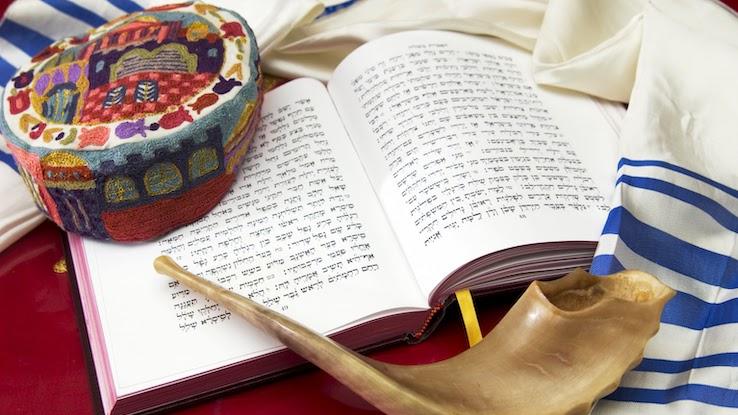
Rosh Hashanah is considered the beginning of one of the holiest periods of the year in the Jewish faith. Observed annually, the holiday is a new year celebration leading into a 10-day period of reflection and contemplation that ends with another important Jewish holiday, Yom Kippur.
While annual New Year celebrations around the world on December 31 can be boisterous and festive, Rosh Hashanah has a different tone. Although people often celebrate the occasion with a traditional meal, it’s generally a quiet, sacred time for Jewish people to examine themselves and their actions and ask for forgiveness for their wrongdoings of the past year. Learn more about this meaningful Jewish holiday and how it’s celebrated each year to better understand its importance in Judaism.
Rosh Hashanah Is a Time of Reflection and Repentance
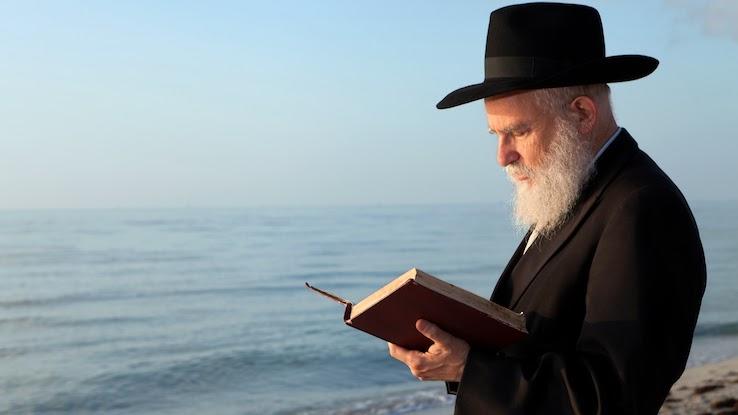
Rosh Hashanah is the beginning of the new year for people who practice Judaism. The term “Rosh Hashanah” means “head of the year” or “first of the year.” Much like New Year’s Day that takes place on January 1 of the Gregorian calendar, Rosh Hashanah is a time for people to think about their priorities in life and the ways they can improve over the course of the year. They may look back on meaningful achievements they accomplished over the ending year and commit to achieving new goals in the future. During the holiday, Jewish people traditionally greet each other by saying “L’shanah tovah,” which means “good year.”
Rosh Hashanah also marks the start of the Days of Awe, which is a 10-day period of prayer, reflection and repentance. Many Jewish people believe that God takes this time to look over a person’s good and bad deeds and decides what the upcoming year will look like for them. For this reason, Rosh Hashanah is also known as a day of judgment, so people spend this time reflecting on their relationship with God and asking for forgiveness for their mistakes during the year. The Days of Awe end with Yom Kippur, a somber holiday when people spend the day fasting, praying and attending synagogue services to atone for wrongdoings.
What Are the Origins of Rosh Hashanah?
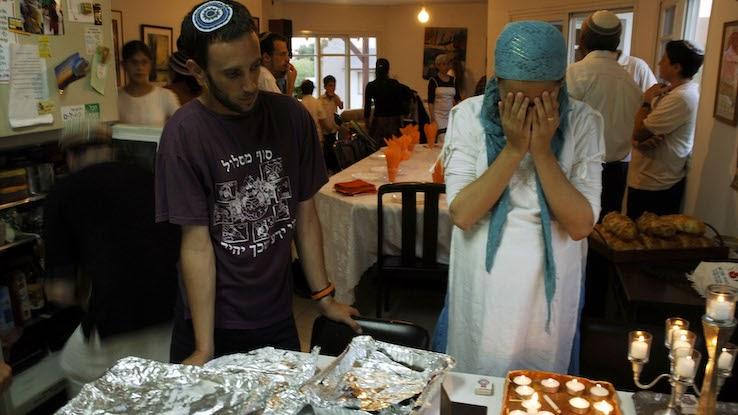
Rosh Hashanah isn’t specifically named in the Torah, an important section of the Hebrew Bible that informs many traditions in Judaism. The Torah does mention a sacred occasion that starts on the first day of the seventh month of the Jewish calendar, which is when Rosh Hashanah takes place. In the passage of text, God tells Moses that the people of Israel should observe the first day of the seventh month as a day of rest and mark it with the blast of horns.
From these passages, Rosh Hashanah was said to have likely been established by the sixth century BC. However, the term “Rosh Hashanah” didn’t show up in written text until 200 A.D. The Mishnah, a compilation of oral histories and legal writings from rabbis, officially named and referenced Rosh Hashanah around this time.
When Does Rosh Hashanah Take Place?
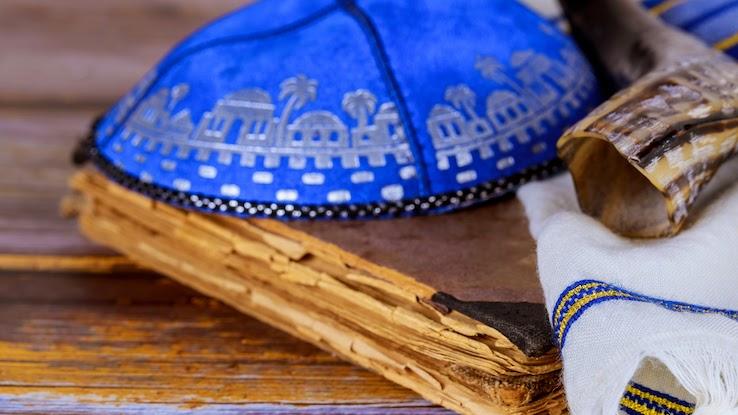
Most people today base their business activities on the dates of the Gregorian calendar, which is widely used around the world. However, different Jewish holidays throughout the year take place based on the Hebrew calendar, which is based on both moon phases and solar years.
The Hebrew calendar begins with the month of Nisan, but Rosh Hashanah occurs at the start of Tishrei, which is the seventh month. That’s when God is said to have created the world in Judaism. As in the Torah, Rosh Hashanah begins on the first day of Tishrei and is observed for one or two days, depending on the denomination of the people celebrating.
The exact dates of Rosh Hashanah differ every year. Because it’s based on the Hebrew calendar, which is over a week shorter than the Gregorian calendar, there isn’t a fixed date based on the Gregorian calendar. However, Rosh Hashanah almost always takes place in September or October.
Rosh Hashanah Begins With the Sounding of the Shofar
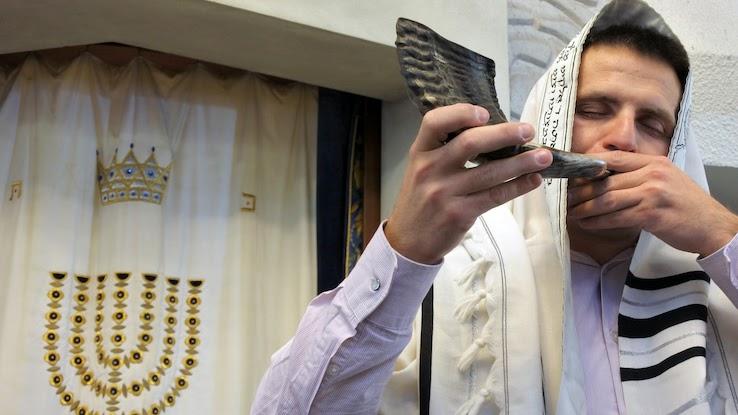
There are several unique traditions people follow to observe Rosh Hashanah, including what’s called the sounding of the shofar. Before Rosh Hashanah begins, the shofar — a trumpet made from a ram or kosher animal’s horn — is blown periodically in synagogues during holiday services. The shofar blower plays four sets of notes on Rosh Hashanah: “tekiah,” or a long blast; “shevarim,” or three short blasts; “teruah,” or many staccato blasts; and “tekiah gedolah,” which is a very long blast.
During the holiday, shofar blasts are sounded at least 100 times during services. The sounds symbolize many things, from the need to awaken from spiritual slumber (the long blast of tekiah) to the need for consistency in daily actions and short steps to progress (the short sounds of teruah). Because this ritual begins Rosh Hashanah, the holiday is also known as Yom Teruah, or the “day of blasting” the shofar.
Some Rosh Hashanah Traditions Are Solemn and Ceremonial
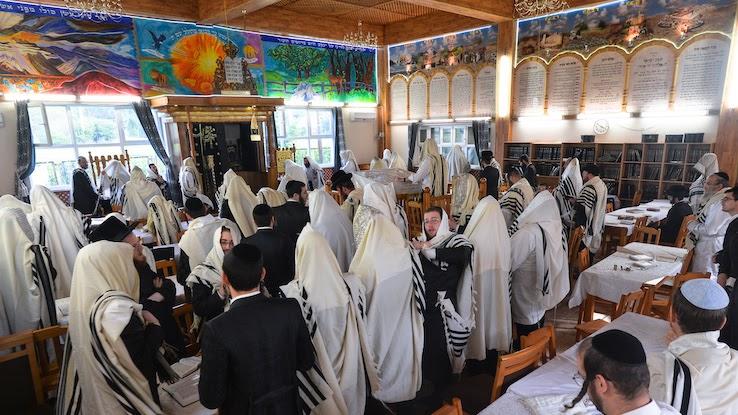
Because Rosh Hashanah is one of the most sacred holidays in Judaism, it’s meant to be a day of rest and reflection, not laboring. The Torah forbids work on this holiday, so many Jewish people spend much of the day attending synagogue services. These services involve reading specific texts from the Torah, singing songs and observing other customs. Rabbis and their congregations also read from a prayer book called the Machzor during both Rosh Hashanah and Yom Kippur.
Some people who observe Rosh Hashanah also go to a body of water to perform Tashlich. During this ceremony, people throw bread or pebbles into the moving water to symbolize that they’re casting away their sins and choosing righteousness. They may say prayers and then shake out the corners of their clothes as another symbol of shaking sins out of their souls.
Rosh Hashanah Foods Symbolize Sweetness and Rejuvenation
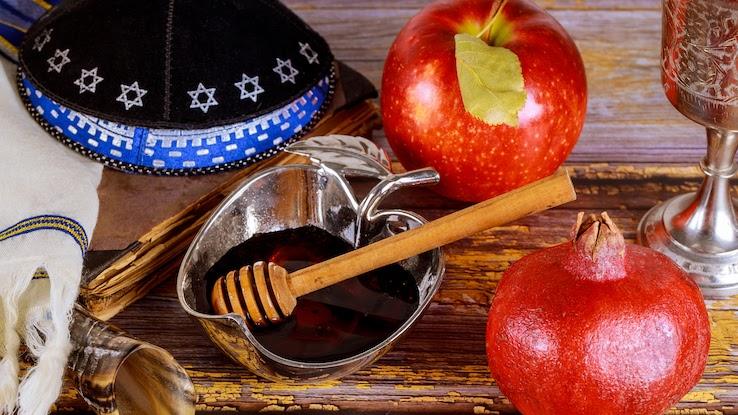
Several traditional Rosh Hashanah customs involve certain foods, many of which represent wishes for the coming year. Many people who observe this holiday eat sweet foods because they symbolize the sweet year they hope God will bless them with.
Apple slices dipped in honey are a common Rosh Hashanah snack, and there’s some symbolism behind this pairing. Apples represent a connection to God, and eating slices of the fruit represents receiving blessings from God. Using honey as a sweetener represents that the year will be one of happiness and success. People also often eat cakes made with apples and honey on the holiday.
Eating round challah bread is another Rosh Hashanah tradition. Challah bread, which people use as an offering on important days, typically has a long, braided loaf shape. Forming the braids into rounds for Rosh Hashanah symbolizes the circle of life and the way the old year smoothly transitions into the new year. Many bakers add raisins to the dough as another symbol of the sweet year ahead.
Other foods that represent Rosh Hashanah include pomegranates and fish heads. According to the Jewish Museum in New York City, pomegranates are thought to have 613 seeds each, which corresponds to the 613 commandments in the Torah. Fish heads are sometimes eaten on Rosh Hashanah because of the holiday’s literal meaning, “head of the year,” and as a wish to “be heads, not tails” or leaders, not followers, in the coming year.





